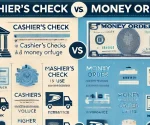The difference between cash flow and income statement lies in the type of information they provide about a company’s financial health. The cash flow statement tracks the inflow and outflow of cash, while the income statement, also known as the profit and loss statement, is a profit/loss statement of a company over any specific period. This is critical in arriving at distinctions in ascertaining a business’s efficiency operationally and in liquidity terms.
What is Cash Flow?
Cash flow refers to the movement of cash in and out of a business. It represents the liquidity of the organization and is crucial for meeting immediate obligations like paying suppliers, employees, and operating costs. The cash flow statement categorizes cash movements into three main activities: operating, investing, and financing.
Components of a Cash Flow Statement
The Cash Flow Statement breaks into three heads, each of which reflects a specific aspect of cash movements by a company. These reflect the cash flow from operating activities, investing activities, and financing activities- showing how cash is generated, used, and managed by the company.
- Operating Activities: This section reflects cash generated or used in the core operations of the business. It focuses on the primary revenue-generating activities of the company, showing how well the business can generate cash to sustain its operational needs.
- Investing Activities: This section highlights cash spent on or earned from the company’s investments in long-term assets and other investment opportunities. It provides insights into how the company is allocating resources for future growth.
- Financing Activities: This section captures cash movements related to the company’s financing structure or capital structure, including transactions with shareholders and creditors. It reflects how the business raises capital and returns it to investors or repays debt.
Cash Flow Statement Format:
| Particulars | Amount (₹) |
| A. Cash Flow from Operating Activities | |
| Net Profit Before Tax | XXX |
| Add: Adjustments for Non-Cash Items | |
| – Depreciation | XXX |
| – Interest Paid | XXX |
| – Interest Received | (XXX) |
| Operating Profit Before Working Capital Changes | XXX |
| Adjustments for Working Capital Changes: | |
| – Increase in Current Assets | (XXX) |
| – Decrease in Current Assets | XXX |
| – Increase in Current Liabilities | XXX |
| – Decrease in Current Liabilities | (XXX) |
| Cash Generated from Operations | XXX |
| Less: Income Tax Paid | (XXX) |
| Net Cash from Operating Activities (A) | XXX |
| B. Cash Flow from Investing Activities | |
| Sale of Fixed Assets | XXX |
| Purchase of Fixed Assets | (XXX) |
| Interest Received | XXX |
| Net Cash from Investing Activities (B) | XXX |
| C. Cash Flow from Financing Activities | |
| Proceeds from Share Issue | XXX |
| Proceeds from Borrowings | XXX |
| Repayment of Borrowings | (XXX) |
| Interest Paid | (XXX) |
| Dividends Paid | (XXX) |
| Net Cash from Financing Activities (C) | XXX |
| Net Increase/Decrease in Cash (A+B+C) | XXX |
| Add: Opening Cash and Cash Equivalents | XXX |
| Closing Cash and Cash Equivalents | XXX |
What is Income Statement?
The income statement, also known as the profit and loss statement, provides a summary of a company’s revenues, expenses, and profits or losses over a specific period. It focuses on the company’s profitability rather than its liquidity. The income statement follows the accrual accounting principle, recording revenues and expenses when they are incurred, not when cash is exchanged.
Components of an Income Statement
An income statement portrays a business’s financial performance over a while by including revenues, expenses, and net income. It acts as an important tool for checking profitability and assessing operational efficiency.
- Revenues: Represents the income earned by the company through its primary operations during a specific period. It highlights the effectiveness of the business in generating income from its core activities.
- Expenses: Represents the costs incurred by the business to generate revenue during the reporting period. These are deducted from revenues to calculate net income.
- Net Income (Profit or Loss): The bottom line of the income statement, represents the difference between total revenue and total expenses. It indicates whether the company has achieved a profit or incurred a loss during the period. Net Income = Total Revenue – Total Expense.
Income Statement or Profit and Loss Statement Format:
| Particulars | Amount (₹) |
| Revenues | |
| Revenue from Operations | XXX |
| Add: Other Income | XXX |
| Total Revenue | XXX |
| Expenses | |
| Cost of Goods Sold (COGS) | XXX |
| Employee Benefits Expense | XXX |
| Depreciation Expense | XXX |
| Other Operating Expenses | XXX |
| Total Expenses | XXX |
| Net Profit Before Tax | XXX |
| Less: Tax Expense | XXX |
| Net Profit (After Tax) | XXX |
Difference Between Cash Flow & Income Statement
Understanding the difference between cash flow and income statement is crucial for a complete analysis of a company’s financial health.
| Aspect | Cash Flow Statement | Income Statement |
| Definition | Tracks the actual inflows and outflows of cash and cash equivalents during a specific period. It highlights how cash is generated and used in operations, investments, and financing activities. | Summarizes the company’s revenues, expenses, and profits or losses over a specific period. It provides a detailed view of the operational results and financial performance. |
| Focus | Emphasizes liquidity and the availability of cash to meet short-term financial obligations. It answers the question: “Does the company have enough cash to run its operations and meet payments?” | Focuses on profitability and operational success. It addresses: “Is the company generating enough revenue to cover its costs and earn a profit?” |
| Accounting Basis | Prepared using the cash accounting method, meaning it records transactions only when cash is physically received or paid. Non-cash transactions, like depreciation, are excluded. | Prepared using the accrual accounting method, recording revenues and expenses when they are earned or incurred, regardless of actual cash movement. Non-cash items, like depreciation, are included. |
| Components | Divided into three sections: 1. Operating Activities: Cash flows from primary business operations. 2. Investing Activities: Cash flows from asset purchases or sales. 3. Financing Activities: Cash flows from debt or equity financing. | Comprises two primary sections: 1. Revenues: Income from operations and other sources. 2. Expenses: Costs incurred to generate revenues, including direct costs (e.g., raw materials) and indirect costs (e.g., salaries, rent, and depreciation). |
| Purpose | Provides insight into a company’s ability to manage its liquidity, meet short-term obligations, and finance growth or expansion. It helps stakeholders evaluate whether the company can sustain its cash flow needs. | Offers a clear picture of the company’s profitability and financial performance over time. It aids in assessing operational efficiency and helps stakeholders make investment or management decisions. |
Conclusion
The difference between cash flow and income statement highlights two distinct aspects of a company’s financial health. While the cash flow statement focuses on liquidity and cash management, the income statement emphasizes profitability and performance. Both are essential for a comprehensive understanding of a business’s operations, enabling better decision-making for investors, managers, and other stakeholders. A balanced evaluation of these financial statements ensures a thorough analysis of both short-term stability and long-term growth potential.
Cash Flow vs Income Statement FAQs
What is the primary difference between cash flow and income statement?
The cash flow statement tracks actual cash movements, while the income statement shows profitability based on revenues and expenses.
Can a company have positive cash flow but a loss in the income statement?
Yes, a company can have positive cash flow due to timing differences or financing activities, even if it reports a loss on the income statement.
Why are cash flow and income statements important for businesses?
They provide complementary insights: cash flow assesses liquidity, and the income statement evaluates profitability.
How do cash flow and income statements complement each other?
They offer a complete picture of financial health, balancing immediate cash needs with overall profitability.
What is included in a cash flow statement but not in an income statement?
The cash flow statement includes non-operating activities like financing and investing transactions, which are not part of the income statement.


